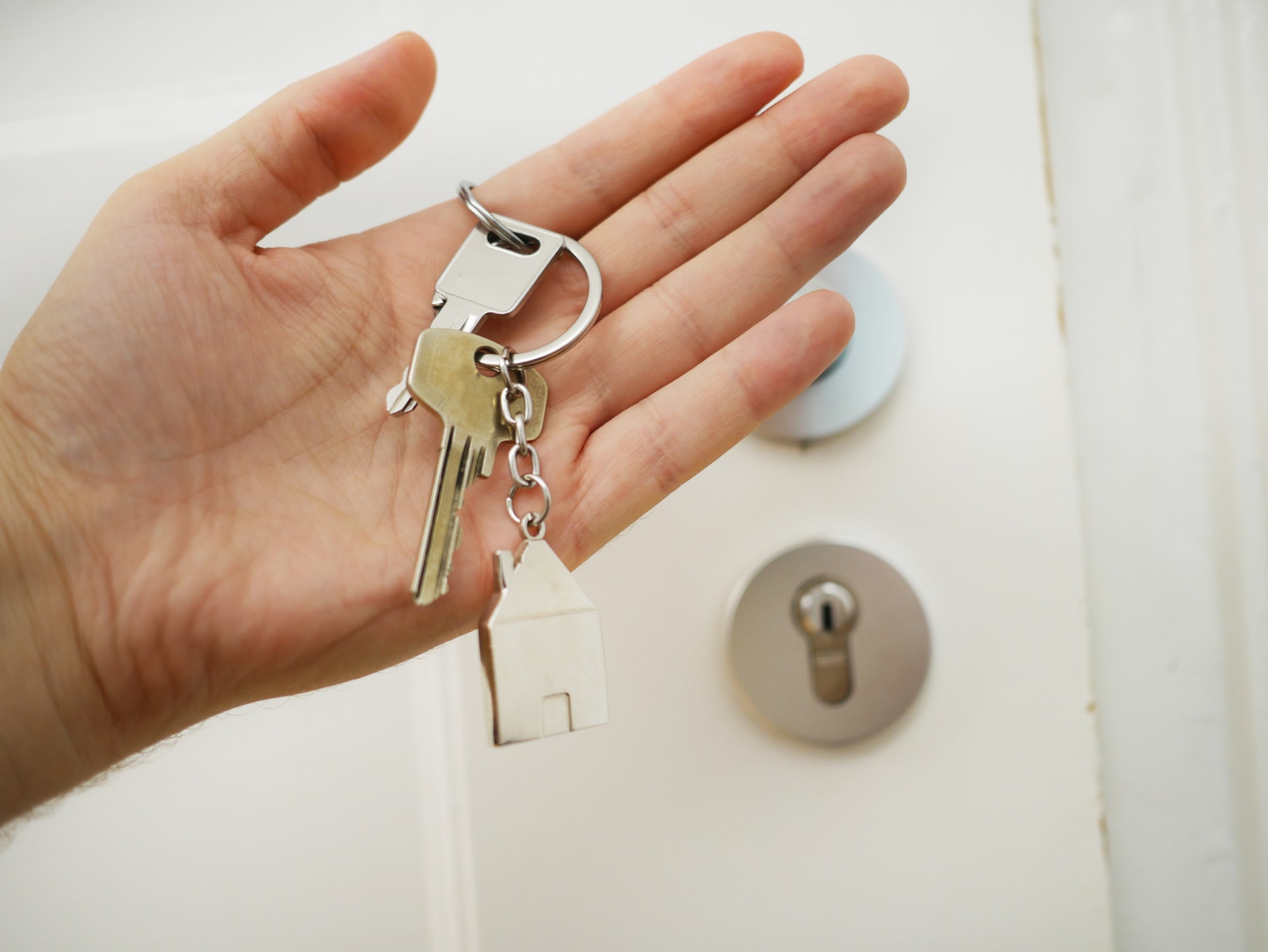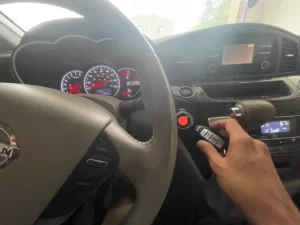
How To Remove A Broken Key From A Lock With 6 Easy Ways
You’re running late for work and rushing to get everything in order. With your hands full, you rapidly enter the key into the lock on your front door and twist it – only you don’t feel any smooth movement. Instead, you hear a cracking sound and look down to see that your home key has snapped within the lock. What a great way to begin the day.
A key breaking off within the lock is a vexing and annoying situation.
Why Do Lock Keys Break?
This condition can be caused by a number of factors.
- Standard keys are constructed of soft metals such as brass and nickel.
- The key has been worn down by time and use.
- The lock is either too greased or has jammed.
What Should You Do If a Key Breaks in the Lock?
Whatever the reason for the broken key inside the lock – whether it’s a residential lock, a business lock, or a car lock – it should be fixed right away.
The shattered key may potentially harm the lock.
If the key broke within the lock before the door was closed, you will be unable to lock it, putting your house, car, or workplace at higher danger of theft.
If the key broke off in the lock after you closed the door, you may not be able to reopen it until the problem is remedied.
How Do You Remove a Broken Key From a Lock?
If a key has broken off within the lock and a bit of it is hanging out, you should count yourself fortunate.
If this is the case, you may be able to extract the remaining bit of key from the lock by squeezing it between your fingers and drawing it out.
If you can’t find the piece that’s still within the keyhole, it’s time to reach for your toolbox.
Disassemble the Lock
If you have Schlage door hardware (or other manufacturers), taking apart the lock to reveal the rear side of the cylinder is frequently the easiest and quickest thing to accomplish. The cylinder will have holes on the rear side that you may poke through to get the key out.
Remove the lock from the door to gain access to the lock cylinder. From the back, examine the portion into which you generally insert the key (the cylinder). Do you perceive a gap? In many situations, you may simply put a paper clip or other tiny rod through the hole into the back of the cylinder to force out the damaged key.
To reach the access hole, you may need to remove the c-clip (or nut) on the rear of the lock. If you are not comfortable doing it, take it to a local locksmith who will disassemble and rebuild it for you.
Using a Key Extractor to Remove a Broken Key
When you don’t want to spend all day attempting to utilize a hack approach to remove a broken key, do what the pros use.
There is simply no better method to remove a broken key that has been jammed in a lock than with the key extractor, a gadget built expressly for that purpose.
Spiral Key extractors are incredibly thin metal strips with grooves in them. These grooves are designed to grab the broken key and allow it to be extracted.
Insert the key extractor along the edge of the key’s cut side to use. Take care not to force the key any deeper into the lock. You’ll be pushing the extractor along the very top edge, trying to push the pins up and out of the way so the extractor can glide in. Twist the extractor and pull out gently. As you try to produce enough friction to pull the key out, this may take numerous attempts.
Tool for Extracting Hooks
The hook extractor is another sort of key extractor. You’re attempting to hook the initial cut of the broken key with the hook extractor and draw the key out. Insert the hook extractor along the key’s cut side and press back until it is slightly past the initial cut. After that, pull. If you’re not in a rush, there are numerous various sorts and reasonably priced key extractor kits on eBay.
To remove the key, use needle nose pliers.
Attempting to Remove the Broken Key Using Needle Nose Pliers
In other situations, the key may not be fully inserted into the lock, leaving just enough of it exposed to be grabbed using a pair of needle tip pliers. Tweezers can also be used, and may even be superior because to their thinness. Simply use whatever you have on hand. Take cautious not to press the key in any farther. You’ll either have enough key protruding to grip the broken edge or you won’t, but you’ll know soon which is the case. remove the key
This will not work for Kwikset locks and some other manufacturers because their backs lack access holes to the interior of the cylinder to press.
Using a Paper Clip or a Small Jigsaw Blade
This procedure is quite similar to the key extraction tool method described above. But because you aren’t a locksmith, what are the chances that you have a key extraction tool laying around? This is the “try anything” technique, where you use any similar little rough, spherical item you have available.
Some paper clips have grooved edges and may be used as a spiral extractor if there is enough room in the lock cylinder. There are also a variety of extremely small jigsaw blades that may be used as hook extractors. I bought a pumpkin carving set at Halloween that had a very good small jigsaw in it that I now keep in my tool box.
The Online Cheat That Actually Works! – Stick for Glue Gun
There has been a lot of internet buzz about “life hacks” that employ a glue stick from a glue gun to remove a damaged key, such as these glue sticks from Amazon.
We decided to give it a go, and it actually works!
The goal is to soften the tip of the glue stick before inserting it into the key hole. It may be retrieved if the glue softens sufficiently to conform around the key and then hardens around the key or part of the shattered metal edges.
It can be done effectively, but it’s not as easy as the web videos make it appear. We got it to work, but we learned a few problems along the way.
Depending on how the key is broken, there may not be a sharp metal edge for the adhesive to grip during extraction. The power required to peel the glue stick off the flat section of the key cylinder also splits the glue stick off the key’s edge, as we discovered.
Trim the glue stick edge to a point and insert it into the key hole to assist with this.
Before pulling on the glue stick, move it carefully from side to side, breaking off the face of the cylinder on each side of the keyhole. This allows for a gentler pull while the glue stick remains on the edge of the key.
The glue stick barely pulled the key out of the hole somewhat on a few attempts, but it was enough for me to grip it and pull it out with needle tip pliers.
The Online “Tip” You Should Never Use to Remove a Key
You may have seen some internet suggestions to use super glue to remove the key. What?!? Seriously?
The goal is to use super glue only on the very tip of the damaged key. Now you must accomplish this without putting super glue on any other portion of the key, otherwise you will glue the key into the lock cylinder, and none of the procedures we have explained will work any more, and you will have to replace the lock.
However, once you’ve gotten that magical drop of super glue on only the tip of the broken key, lay another little object (such as a paper clip) over the glue and wait for it to dry and attach. Pull carefully until the key comes out.
I’m sure some individuals will want to give it a shot. Once you’ve glued the key into the lock, you’ll need to disassemble it and soak it in finger nail polish remover to dissolve the glue before trying the other methods we’ve discussed to get the key out.
What if you are still unable to extract the broken key?
If you’ve tried everything but the adhesive, simply take the lock off the door and take it to your local locksmith. They’ll be able to extract the key for less than the cost of a new lock. If you rejected my advise and glued the key in, throw away the lock and buy a new one. However, you should get a replacement lock from a local locksmith. Not only will they obtain you a decent deal, but most locksmiths will key up the new lock to your current home key as part of the purchase, at no extra cost.
How to Avoid Broken Keys
There are a few things you can do to prevent a key from breaking off inside a lock in the first place.
Lubrication of the Lock
Keys frequently snap inside locks because the lock has not been properly maintained. Every six months, or whenever you detect grinding or additional friction when locking the door, spray a silicone-based lubricant into the keyhole.
Key Replacements
Keys are regularly used and subjected to a great deal of abuse. So, if you see that your keys are becoming worn, it’s time to get a duplicate produced and throw the old one.


